Cedar Ridge Preserve is located on Van Dyke Rd in Hopewell NJ.
Link to NJ Trails hike map and description.

Goldenrod, Solidago canadensis. This flower is the first sign of the autumnal season for me. It is a little darker when I wake up in the morning and the air has a slight chill to it. Lately I have been challenging myself more to try to identify more new plants. For awhile I had reached saturation level, and would see a plant I didn’t recognize and be able to say “Hmmm… don’t know that one” and walk on. Now, I am on an all out plant-blitz, trying to figure out everything I don’t know (except grasses, rushes and sedges… those I will still happily “Hmmm… I don’t know” and walk on). I have been reaching out to friends, former colleagues and even new acquaintances (hopefully soon to be friends!) and playing “Name that plant!”. My good friend Julia Perzley, soon to be Dr. Julia Perzley (Go Julia!), has been a major contestant in this game and I wanted to give her a shout-out as a meadow forb wizard!

Heal-all, Prunella vulgaris, a native flower belonging to the Mint Family. I surmise from the name that this plant was used in traditional medicine. I love that I have been working in ecology for 11 years, and on a weekly basis I can go out for a hike and consistently see plants that I have never noticed before.
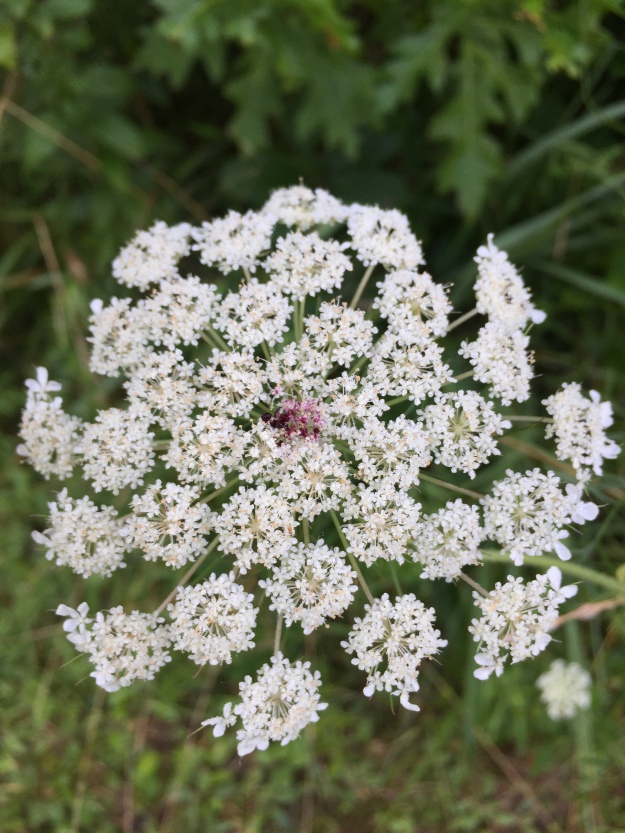
Queen Ann’s Lace, Daucus carota, with the “blood drop”. While the story of a drop of blood dropping on this flower is quite the folk lore, in all actuality this red spot acts as a homing beacon to pollinators!
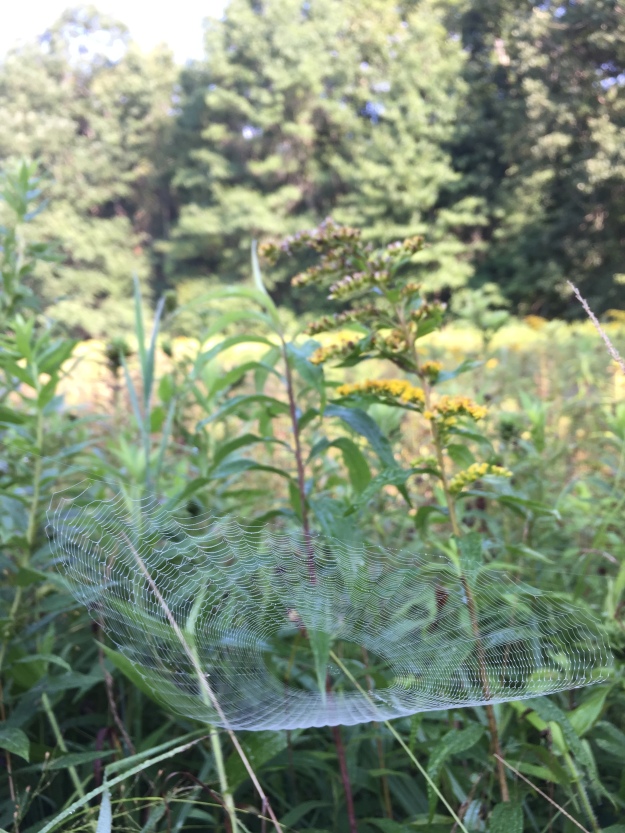
A spider’s net that has caught nothing but dew. I love hiking after/during a light rain or early on a dewy morning because you can see all of the stunning spider webs!

This native purple beauty is called New York Ironweed, Vernonia noveboracensis. I daydream of having a front garden with flowers this color… I think I am going to have spend some time this winter researching seed sources for some of these lovely flowers!
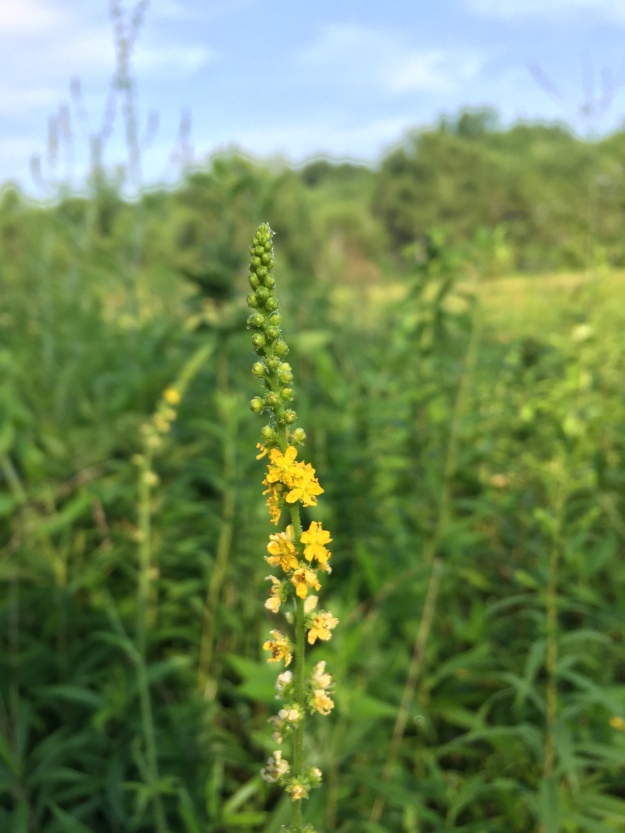
Agrimony, Agrimonia parviflora. I reached out to one of our fabulous volunteers Pat Coleman, who works both as a Pennsylvania Master Naturalist Instructor and a Bowman’s Hill Wildflower preserve volunteer naturalist. A truly lovely lady with a ton of wisdom! A common name for Agrimony is “fairy’s wand” and in folk lore it was used to ward off witches!

Eastern Tiger Swallowtail, Papilio glaucus, on Joe Pye Weed, Eutrochium purpureum. Joe Pye Weed is an excellent choice if you want to attract a plethora of butterflies!

Monarch Butterflies, Danaus plexippus, on Milkweed, Asclepias syriaca. Here is a link to the National Wildlife Federations webpage about Monarchs.
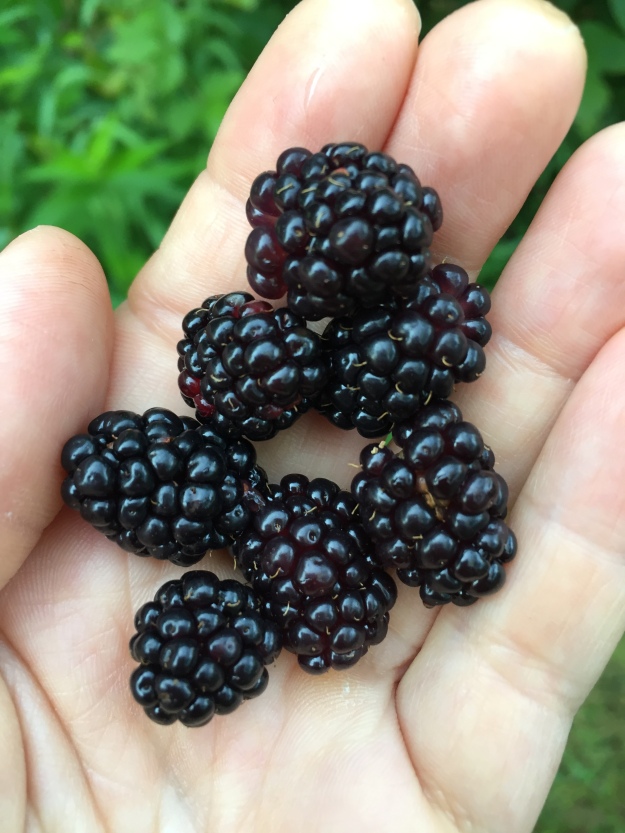
Blackberries, Rubus allegheniensis! Yum!

A little bench in the woods overlooking a stream. What a wonderful spot to sit and ponder, or perhaps write a poem?

A massive Momma spider protecting her egg sack and itty bitty baby spiders. I really wasn’t sure what kind of spider this was and I asked around and the consensus is a wolf spider, family Lycosidae. I have never seen a spider quite this large on the East Coast. When I worked in the Mojave Desert I would regularly see Tarentulas, particularly in November during their breeding season. If you think this is some other type of spider, I would love to know what you think it is!
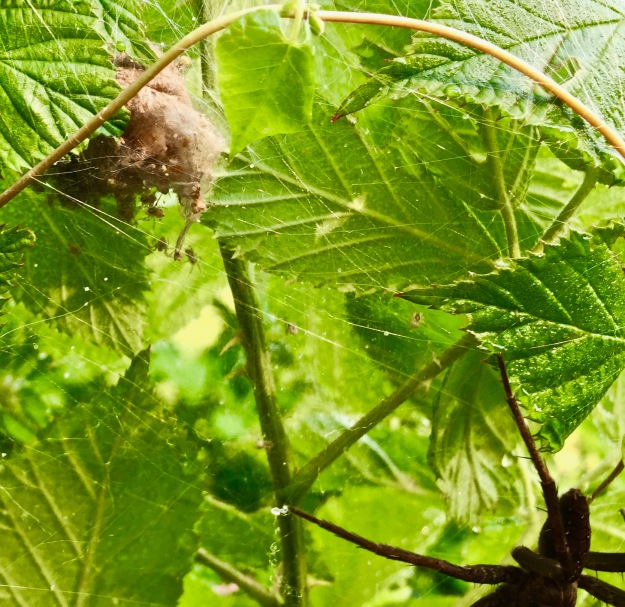
Itty Bitty Baby Spiders!
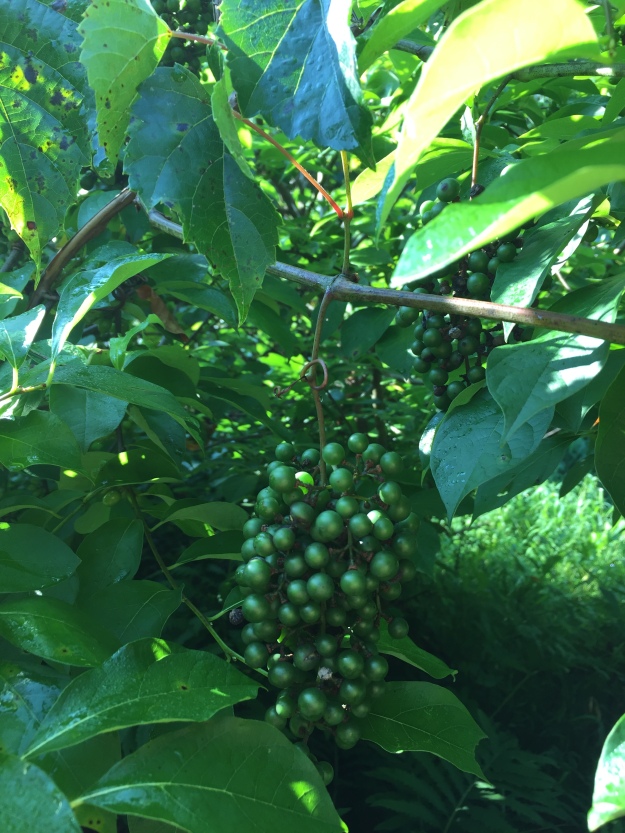
Grapes, Vitis spp.! This is most likely River grape, Vitis riparia. It was growing very close to the stream bank and the leaves look very similar to river grape, however I am not 100%. In the past, I have only ever identified grapes to their genus and this is my first exploration into the different species of grape.
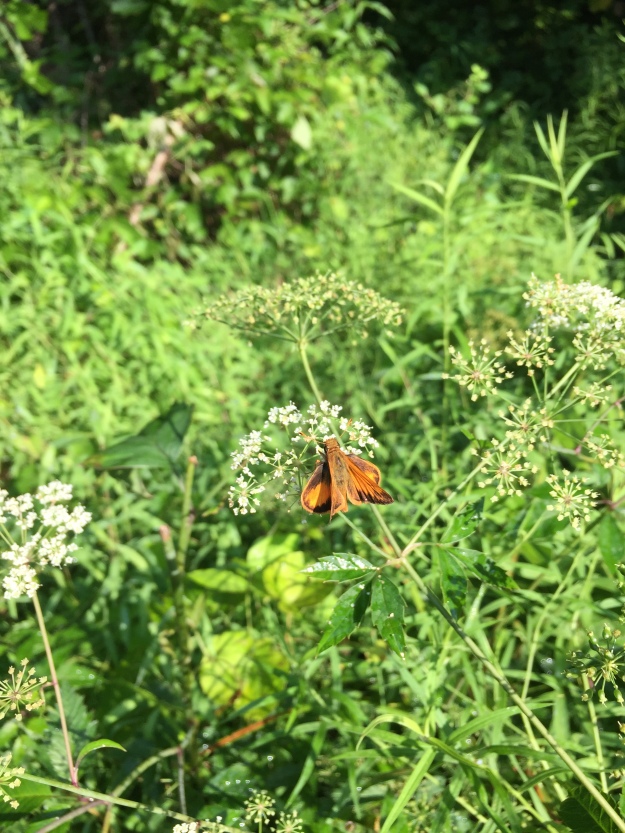 I think this is a Fiery Skipper, Hylephila phyleus. I really am not any sort of entomologist, and I will not tell a lie that I hope it is a Fiery Skipper because I think that is the most amazing moth name I have ever heard! This is also a new-to-me plant. I believe this to be Water Hemlock, Cicuta maculata. From what I have been reading, it is one of the MOST toxic plants in the United States. I was giving myself an anxiety attack (yikes!) from reading into this plant and learning how toxic it is! Here is an article about how to identify it.
I think this is a Fiery Skipper, Hylephila phyleus. I really am not any sort of entomologist, and I will not tell a lie that I hope it is a Fiery Skipper because I think that is the most amazing moth name I have ever heard! This is also a new-to-me plant. I believe this to be Water Hemlock, Cicuta maculata. From what I have been reading, it is one of the MOST toxic plants in the United States. I was giving myself an anxiety attack (yikes!) from reading into this plant and learning how toxic it is! Here is an article about how to identify it.

What a lovely place to stop and enjoy the woods! I could just imagine relaxing in those chairs with my husband and watching my boys play in the stream.

Burdock, Arctium minus, an invasive with beautiful flowers and annoying burs!
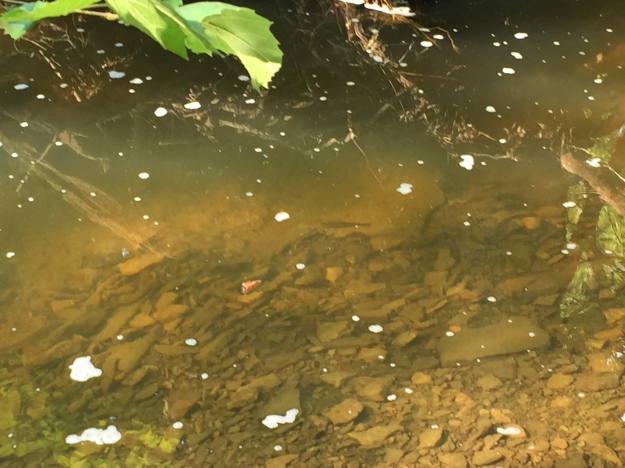
There were a bunch of little fish swimming around in this deeper area. I should have brought along my fishing pole!
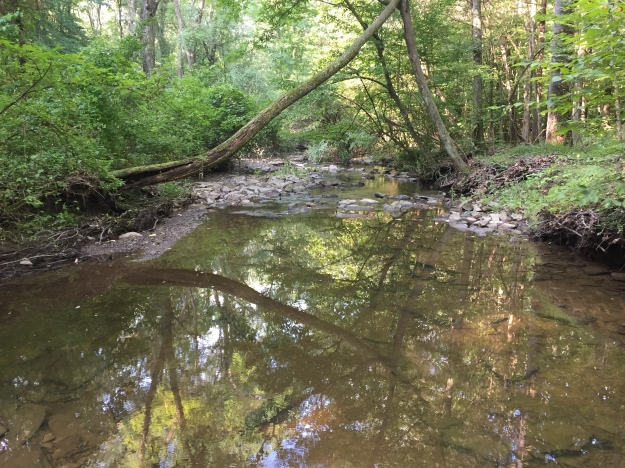
Reflections.

Chanterelles, Cantharellus spp.! I love that they look like little gold nuggets thrown across the forest floor.
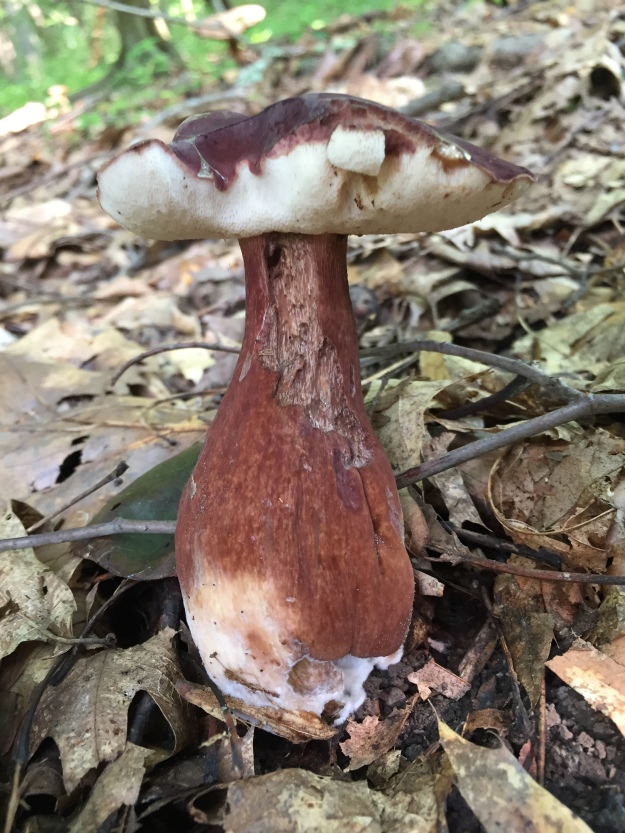
I have no clue what this mushroom is, but I think it looked fabulous and wanted to snap a photo.
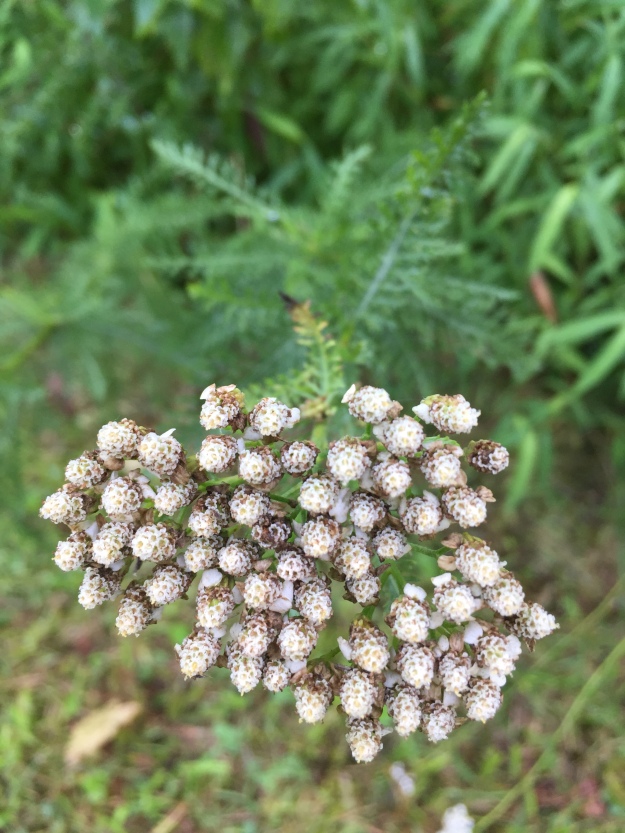
Yarrow, Achillea millefolium, without flower petals. I love that they look like little pinecones on sticks.
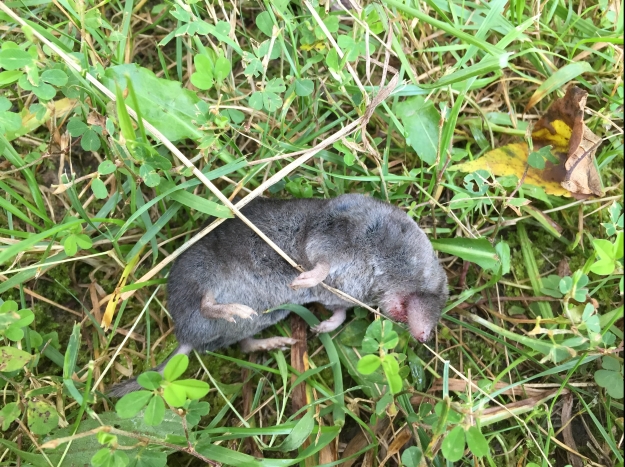
Death in the Sourlands… I think this little one is a Mole, family Talpidae. Moles spend most of their time underground and have very poorly developed eyes. I couldn’t find too much information on Moles, such as what species this might be, just a handful of general articles (here is one to peruse). Most of the articles I found were for pest control….

A Red Milkweed Beetle, Tetraopes tetraophthalmus, on a Milkweed, Asclepias syriaca, seed pod. I love that this little beetle is orange and black just like a monarch… hmmmm…. coincidence? Probably not! Many insects have color patterns that warn predators that they are toxic and to stay away. What a wonderful thing nature is!

Carolyn, this was another great blog post! I thoroughly enjoyed the photos and the commentary. Keep ’em coming!
Chris
LikeLike
Thank you, Chris!
LikeLike
Yep. Another blog post that has me wanting to play hooky from work today and take my camera on a hike.
LikeLike
Go before or after work! I usually go out before I head into the office 🙂
LikeLike
Hi. I tried to do photography before and after work but I have found it challenging. On the days I commute to NYC (it’s a two hours commmute — one way) I leave home at 6:05 AM and return home around 7PM. That means easting a food bar for breakfast and dinner. That’s not healthy.
LikeLike
Yes, with a commute that would be near impossible!
LikeLike